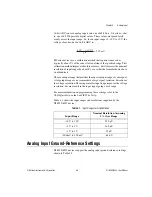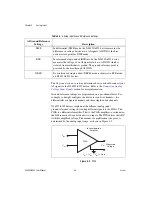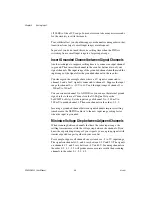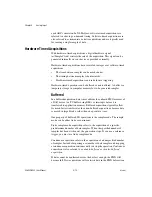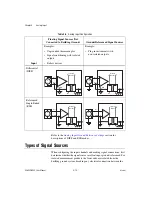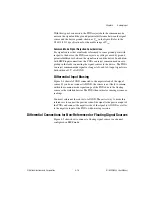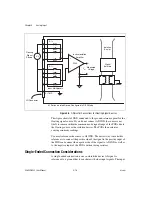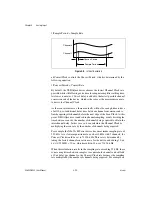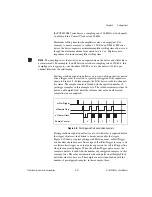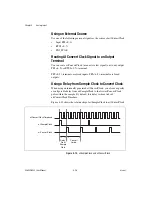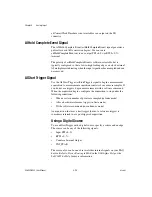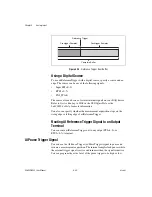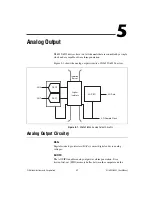
Chapter 4
Analog Input
©
National Instruments Corporation
4-17
signal connects to the positive input of the PGIA, and the ground connects
to the negative input of the PGIA.
You should only use single-ended input connections if the input signal
meets the following conditions.
•
The input signal is high-level (greater than 1 V).
•
The leads connecting the signal to the device are less than 3 m (10 ft).
•
The input signal can share a common reference point with other
signals.
DIFF input connections are recommended for greater signal integrity for
any input signal that does not meet the preceding conditions.
For single-ended measurements, there is one ground-reference point for all
analog input signals, but the reference ground plane is floating, requiring
the user to provide a reference ground. An isolated device protects users
against ground loops in their measurement, as well as allowing the user to
provide a reference ground that is not electrically connected to earth,
system, or building ground.
In the single-ended modes, more electrostatic and magnetic noise couples
into the signal connections than in DIFF configurations. The coupling is the
result of differences in the signal path. Magnetic coupling is proportional
to the area between the two signal conductors. Electrical coupling is a
function of how much the electric field differs between the two conductors.
Single-Ended Connections for Floating or Grounded
Signal Sources
Figure 4-6 shows how to connect a floating or grounded signal source to a
channel configured for RSE mode.

